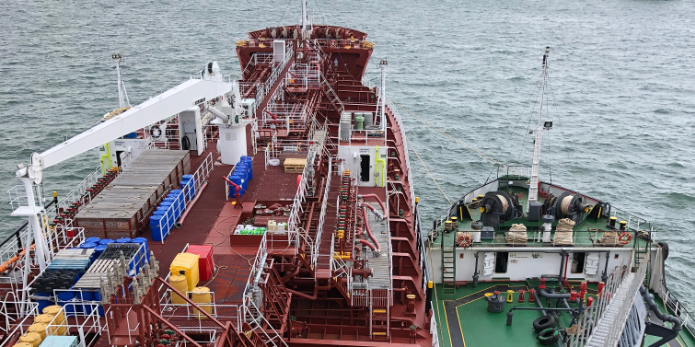As part of its ‘Lessons Learnt’ series, UK Club describes a case of bunker spill in extreme cold weather, highlighting that additional considerations should be taken when bunkering in such conditions.
The incident
The vessel was alongside loading bulk cargo, while HFO was being loaded from a bunker barge.
Weather conditions were good but it was very cold (-20 C°) and there was thick ice and snow on deck.
Prior to bunkering, crew completed all relevant checklists in accordance with the bunker plan and the relevant bunkering procedures under the vessel’s SMS.
They had also taken all necessary safety precautions and recorded all necessary entries in the deck and engine logbooks.
Prior to starting operations, the Chief Engineer and bunker barge skipper agreed a maximum pumping rate of 250 m³ per hour.
The latter confirmed that the supply temperature of the bunkers would be around 35 C°.
The plan was to fill bunker tanks 3 port and 3 starboard, followed by 2 port, then 4 port and 4 starboard. The subject tank, 2 port, was to be filled to approximately 82% of total volume, about 292 m³.
Loading of fuel commenced into 3 port and 3 starboard at about 17:30 and concluded at about 20:00. On completion, 2 port started to fill in the normal way.
At 21:00, the duty engineer took a manual sounding of 2 port, corresponding to the tank being roughly 60% full, or 215 m³. Everything appeared in order and the next sounding check was planned for 21:20.
At 21:15, bunker fuel spilled out of the vent on deck. The saveall was overflowing and fuel was running down the deck and over the side. Pumping operations stopped immediately.
In the event, the majority of the oil spilled was successfully contained on deck.
However a small quantity found its way over the side and into the water.
Probable cause
Investigations revealed that due to the extreme cold weather, the level of fuel in the sounding pipes increased at a slower rate than the tanks themselves.
As such, the readings taken via the sounding pipes were inaccurate.
Lessons learned
- Additional considerations should be taken when bunkering in conditions of extreme cold;
- The bunkering plan must be discussed and understood by all crew involved in the bunkering operation;
- Relevant cold-weather SMS procedures must be taken into account;
- If in doubt, crew members should slow the rate of the bunkering and seek assistance;
- Crew members must remain vigilant at all times and ensure that tank soundings are taken properly and regularly, that they make sense and correspond to the agreed pumping rate.




























































